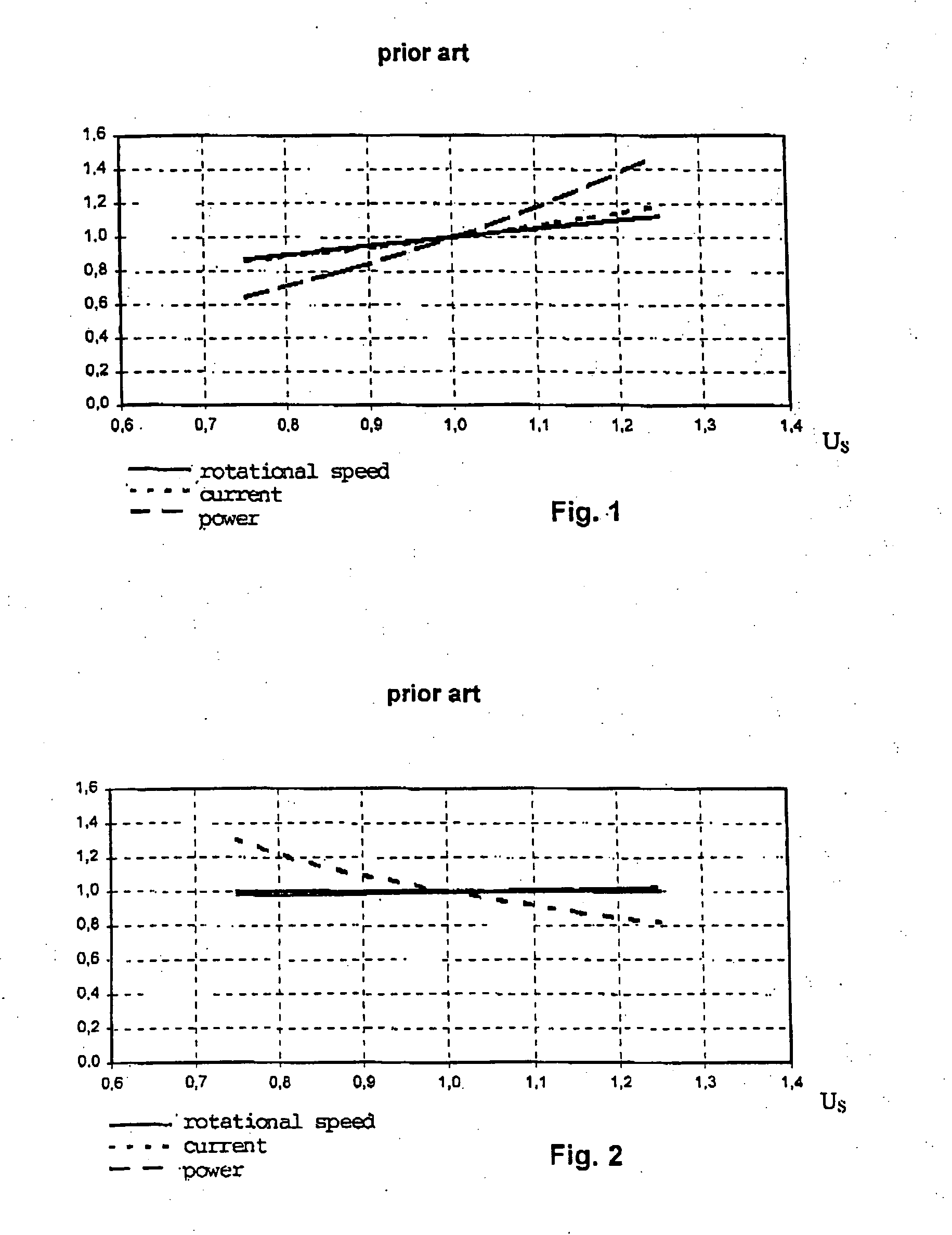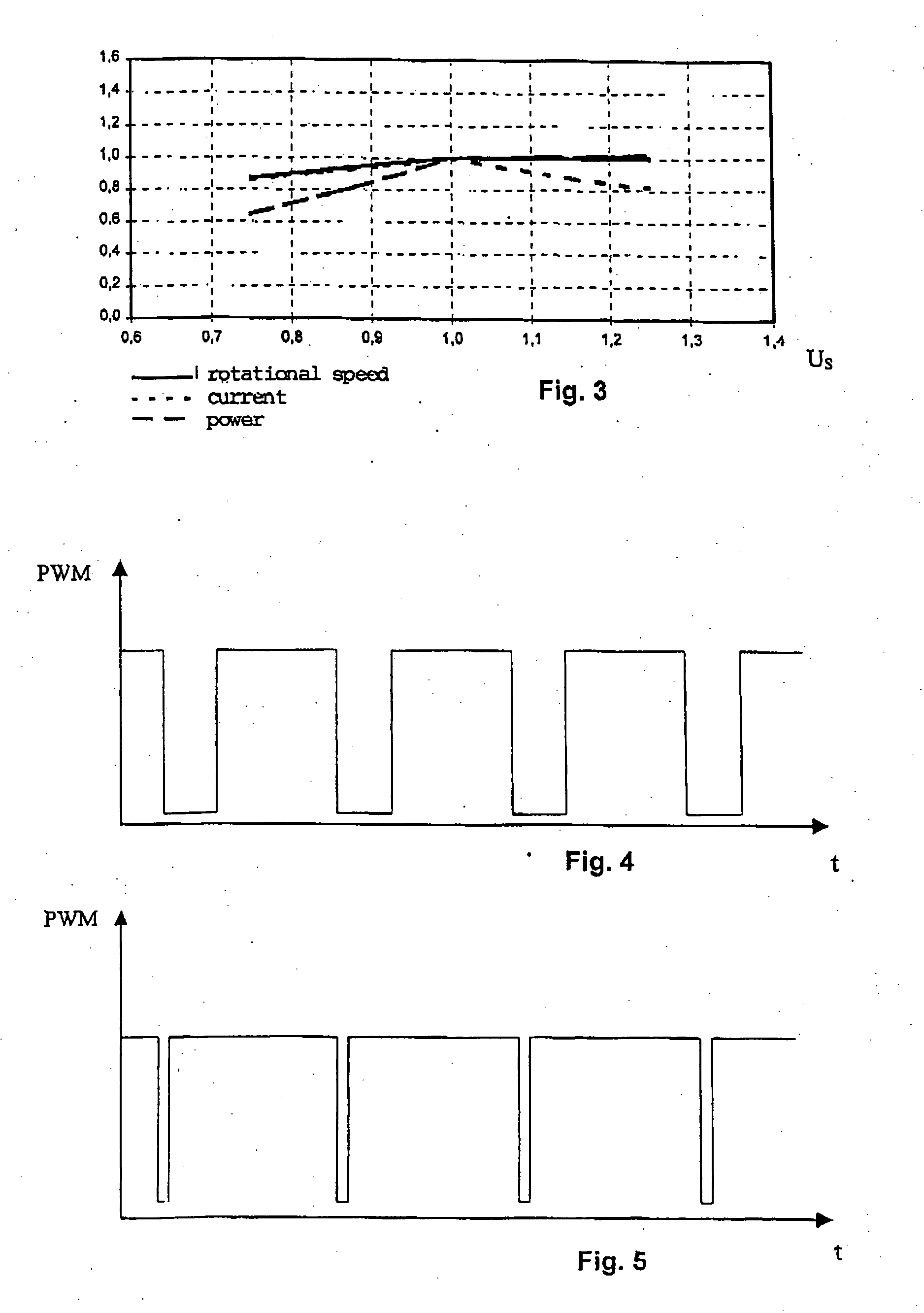Method for controlling a brushless electric motor
a brushless electric motor and electric motor technology, applied in the direction of motor/generator/converter stopper, electronic commutator control, motor/generator/converter stopper, etc., can solve the problem of thermal overload of the motor, the rotational speed of the uncontrolled motor rises, and the motor load increases. the effect of increasing the pwm ratio, reducing the load of the motor, and rotating more slowly
- Summary
- Abstract
- Description
- Claims
- Application Information
AI Technical Summary
Benefits of technology
Problems solved by technology
Method used
Image
Examples
Embodiment Construction
[0021] In FIGS. 1 to 3, the rotational speed is shown as an unbroken line, the current as a dotted line and the power as a dashed line, plotted against the voltage. The parameters have been normalized to the nominal speed, the nominal current and the nominal power as well as the nominal voltage.
[0022]FIG. 1 shows a diagram of the relative speed, motor current and input power (nominal value=1.0) of a brushless fan drive without a closed-loop control according to the prior art, as a function of the relative supply voltage (nominal value=1.0). It can be clearly seen that all values show an approximately linear growth as the supply voltage increases.
[0023] This results in an increase in energy consumption, higher losses in the motor and in the commutation electronics, as well as an increase in flow noise, particularly when the supply voltage is higher than the nominal voltage (1.0).
[0024]FIG. 2 shows a diagram of the relative speed, motor current and input power of a brushless fan dr...
PUM
 Login to View More
Login to View More Abstract
Description
Claims
Application Information
 Login to View More
Login to View More - R&D
- Intellectual Property
- Life Sciences
- Materials
- Tech Scout
- Unparalleled Data Quality
- Higher Quality Content
- 60% Fewer Hallucinations
Browse by: Latest US Patents, China's latest patents, Technical Efficacy Thesaurus, Application Domain, Technology Topic, Popular Technical Reports.
© 2025 PatSnap. All rights reserved.Legal|Privacy policy|Modern Slavery Act Transparency Statement|Sitemap|About US| Contact US: help@patsnap.com



